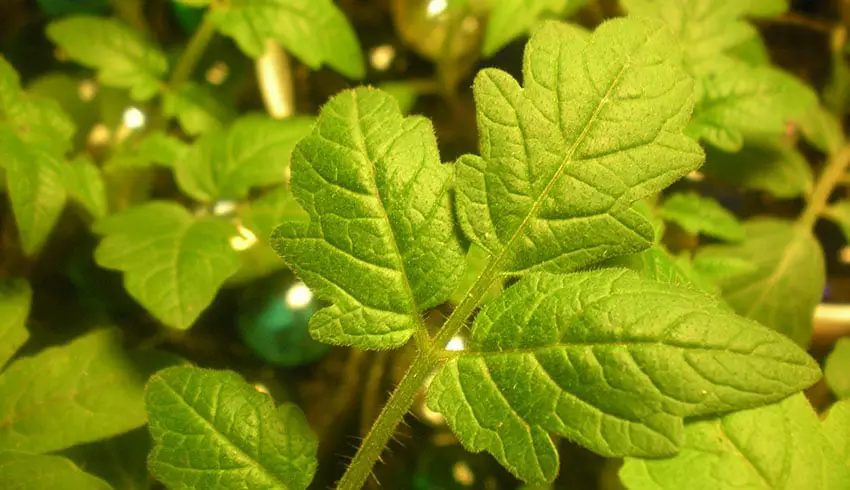How to Deal with Brown Spots on Tomato Leaves

There are several different kinds of funguses and diseases that can create brown spots on your tomato leaves. It is important to not only catch the problem early, but correctly diagnose the problem. Many of these diseases are so similar that it is not possible to diagnose just based on the brown spots. If you are confused about what exactly is the issue you have, you can always make a visit to your local garden shop and get some expert opinions rather than waiting until the disease is in full affect and your plant is riddled with problems.

Funguses and Diseases
Tomato Bacterial Spot
This is an incredibly dangerous disease to the tomato plant as it moves quickly and can get out of control fast. It comes from a bacterium that exists on tomato seeds and some weeds. Because of this the bacteria can spread through water sources like rain, irrigation systems, and wet plants. Tomato plants become infected through pores and wounds and this becomes much more probable in warm, wet weather.
Tomato Spotted Wilt
A virus that is common in temperate and tropical climates is spread by small insects called thrips These bugs suck out the nutrients in the leaves and leave behind small, dark dots. Plants with this virus are typically much smaller, have dark streaks in the stems, and be deformed or wilted. There is no treatment for this virus, but you can prevent it by removing infected plants and reduce the thrips around your plants through weeding and plowing.
Tomato Gray Leaf Spots
This fungus is transported by rain and wind and thrives in moist climates. Once the fungus finds a wet leaf the spores are able so develop and multiply. Treating these spots requires you to remove the infected leaves and apply insecticides to the rest of the plant.
Septoria Leaf Spot
Also known as Septoria leaf cankers or blotches, this disease is on the plant itself and not in the soil and shows up in the oldest leaves first. Wet conditions bring the disease to the plants and warm conditions allow it to thrive. The fungus is party made of old tomato plants so the best way to avoid this is to rotate plating and have your garden in a new spot each year. Fungicides are also helpful once the infection has set in, in order to get your plants healthy again.
Early Blight
Transmitting through airborne spores or garden tools that have come into contact with the fungus, it attaches to wet leaves and multiplies in warm weather. The lowest leaves will be affected first. You can buy blight-resistant plants and use fungicides on the ones that ae infected. Treat the infected plants as soon as possible because the longer you wait, the more resistant the fungus becomes.
Preventions
The best way for you to avoid having problems with your tomato plants is to but bacteria free seeds. If this isn’t an option for you, you can also submerge your seeds for one minute in 1.3% sodium hypochlorite. Boiling the seeds for 25 minutes in 122 degrees Fahrenheit will also remove bacteria from both the outside and inside of the seeds, but can have adverse effects in the germination process. Weeding regularly, keeping space between plants, or keeping them in a greenhouse are all ways to keep your tomatoes healthy. Also always dispose of weeds in places other than your compost bin and always clean your garden tools.
Treatments
Tomatoes are less likely to gather bacteria if they are part of a crop rotation every year. Copper fungicides will also help keep bacteria from growing, but work better when you spray them before any sign of infection.

